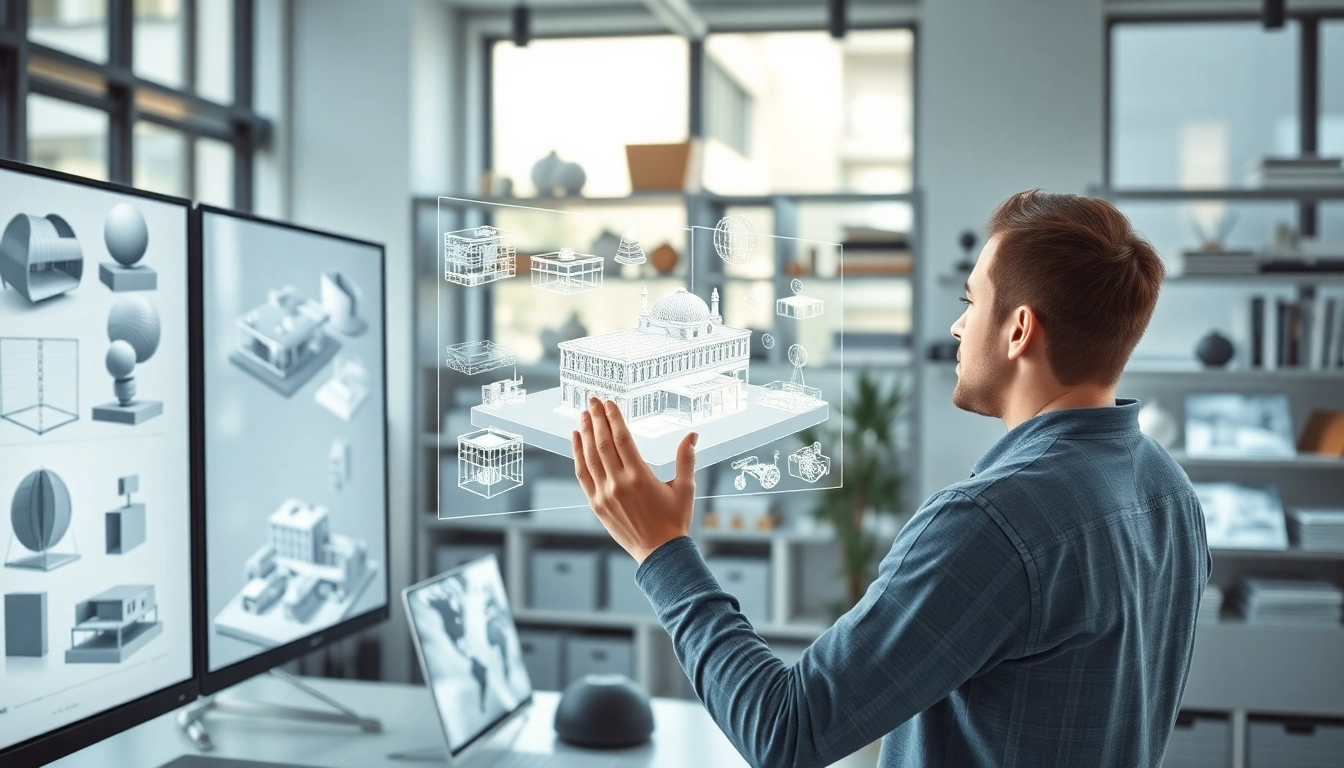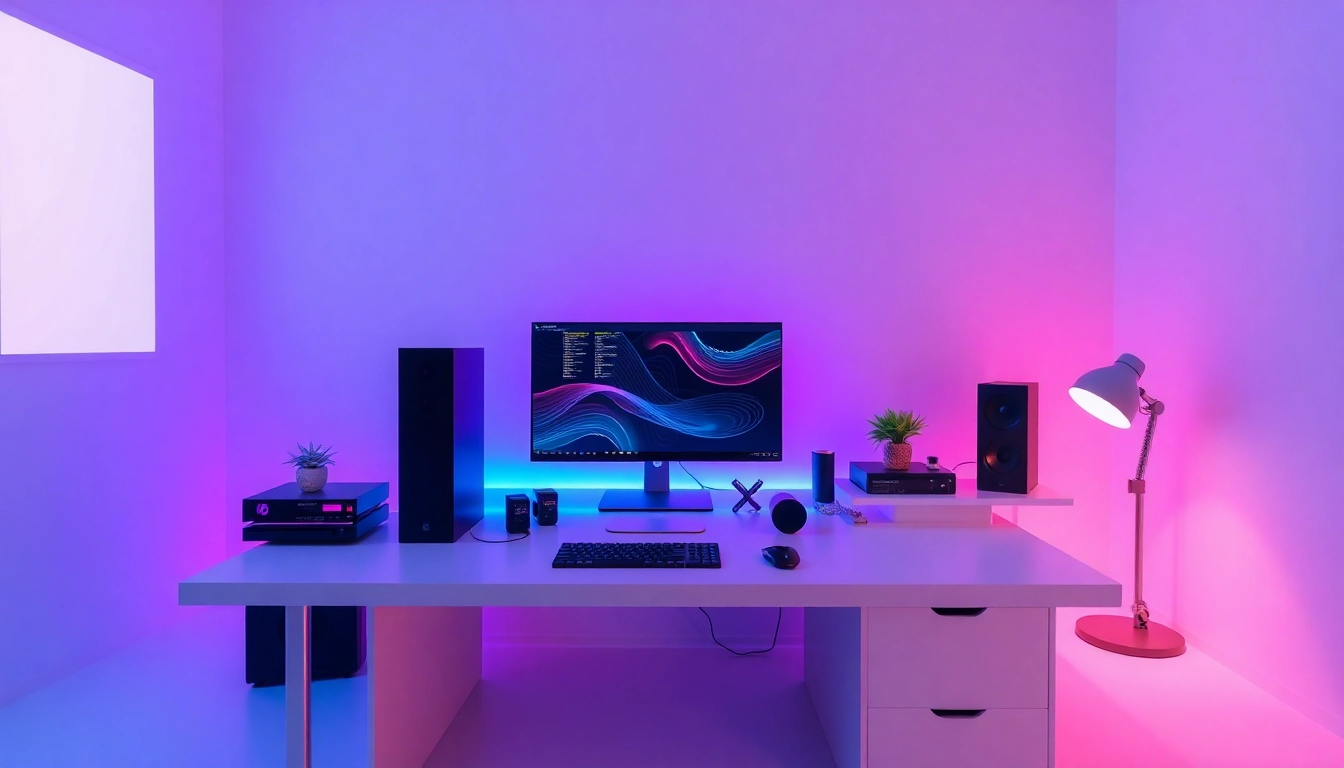Understanding 3D Model Visualizations
What are 3D Model Visualizations?
3D model visualizations refer to the graphical representation of three-dimensional objects created using specialized software. These visualizations can apply to various fields including architecture, product design, engineering, and entertainment. By transforming two-dimensional designs into lifelike, interactive, and manipulatable representations, 3D model visualizations help professionals and clients better understand scale, shape, and aesthetics. Whether viewed on a desktop, mobile device, or in immersive virtual reality environments, these models bring concepts to life, enabling enhanced communication of ideas.
The Importance of 3D Visualizations in Modern Design
In today’s fast-paced design environment, the role of 3D model visualizations is more crucial than ever. They play a vital role in bridging the gap between conceptual ideas and practical execution. By visualizing a project in its three-dimensional form, stakeholders can spot potential problems, explore design variations, and refine overall aesthetics long before any physical prototype is created. This foresight not only enhances the quality of the final product but can also lead to significant cost savings, as alterations are more easily managed in the development phase than after production has begun.
Common Tools for Creating 3D Visualizations
Numerous tools and software options are available to professionals wishing to create 3D visualizations. Here are a few notable mentions:
- Autodesk 3ds Max: A leading 3D modeling, animation, and rendering software favored by professionals in the film and game design industries.
- Blender: An open-source tool offering a comprehensive range of features, suitable for modeling, sculpting, and animation.
- SketchUp: Known for its user-friendly interface, making it a popular choice for architects and designers who require intuitive tools for creating architectural models.
- Unity: While primarily a game engine, Unity’s visualization capabilities allow developers to create interactive 3D environments for various applications beyond gaming.
- Adobe Dimension: This software is geared towards product visualization and offers built-in templates to help users create visually appealing marketing renders.
Key Benefits of Utilizing 3D Model Visualizations
Improved Communication and Collaboration
3D model visualizations provide a common platform that facilitates communication among team members, clients, and stakeholders. Visual representations transcend language barriers, reducing misunderstandings and aligning expectations. They enable users to illustrate complex ideas graphically, resulting in faster consensus and decision-making. Furthermore, utilizing interactive models allows clients to engage more deeply with the design process, encouraging insightful feedback that can lead to project enhancements.
Cost and Time Efficiency in Project Development
Investing in 3D visualizations can significantly reduce costs and time when developing a project. By identifying design flaws and potential issues early in the development phase, teams can rectify problems before they escalate, saving both time and resources. Moreover, 3D visualizations enable quick iterations during the design process. Instead of physical prototyping or extensive revisions in the later stages, teams can make adjustments digitally, accelerating the workflow.
Enhancing Client Presentations with 3D Visuals
When presenting ideas to clients, 3D visualizations allow for a more dynamic and engaging experience. They create a vivid picture that can captivate clients and enable them to visualize the finished project better than traditional 2D sketches or blueprints. As a result, presentations become more impactful, leading to higher chances of project approval and stakeholder buy-in. This enhanced engagement and understanding can foster a better client relationship built on transparency and collaborative vision.
Best Practices for Creating Engaging 3D Model Visualizations
Choosing the Right Software for Your Needs
Choosing the appropriate software depends on the specific needs of your project. Whether you require highly detailed architectural renderings or simple product models, the software should be tailored to your use case. Consider the features that are essential for your work, such as rendering capabilities, animation tools, or integration with other software. Evaluate user-friendliness, support, and community resources as well, as they can facilitate learning and troubleshooting.
Using Color and Light Effectively
Color and lighting are critical elements in 3D model visualizations that can greatly influence perceptions. The right combination can evoke emotions, guide audience focus, and highlight specific areas of a design. Utilizing tools such as light mapping or creating different lighting scenarios (daylight, twilight, artificial light) can showcase how a design looks in various conditions, making the visualization even more realistic and practical.
Integrating Feedback into Your Visualization Process
Feedback is an essential component of the design process. Implementing a system to gather and integrate feedback on your 3D models can lead to more refined and successful outcomes. Encourage stakeholders to provide input at various stages of development, allowing for adjustments that align with their vision. Using collaboration tools that support comments and annotations can facilitate this feedback loop, improving the overall quality of the end product.
Challenges in 3D Model Visualizations
Technical Limitations and Software Bugs
Technical difficulties can hinder the visualization process. Software bugs, hardware limitations, or compatibility issues between different applications can all impede progress. Staying informed about updates and patch notes and having contingency plans to address potential technical failures can help mitigate these challenges. Users should also invest in adequate hardware, including high-performance graphics cards and memory, to optimize rendering speeds and visualization quality.
Overcoming Creative Blocks in Visualization Design
Creative blocks can stifle innovation and productivity. To overcome these barriers, design professionals should diversify their creative inputs. Exploring different design styles or collaborating with artists from various disciplines may inspire new ideas. Taking breaks or engaging in activities outside of work can also stimulate creativity. Reflecting on past successful projects often helps in reigniting inspiration and can guide the creative direction of new work.
Staying Updated with Trends and Technologies
The field of 3D visualization technology is constantly evolving, with new tools, techniques, and trends emerging regularly. Keeping abreast of industry developments is essential in maintaining a competitive edge. Professionals should engage with communities, participate in webinars, and attend workshops to continue learning. Subscribing to industry publications and following key influencers on platforms like LinkedIn can also keep you informed about emerging trends that could influence your work.
Case Studies of Successful 3D Model Visualizations
Architectural Visualization Success Stories
Architectural visualizations have transformed how projects are marketed, developed, and executed. One notable example is the use of immersive 3D renderings in showcasing high-rise buildings before their construction. Many real estate developers now rely on photorealistic 3D models to attract investors and buyers, considerably speeding up sales processes. Firms that integrate virtual reality into their presentations have reported increased client engagement, with potential buyers being able to “walk through” properties before they are built.
Marketing Campaigns Leveraging 3D Visuals
Brands are increasingly using 3D model visualizations in marketing campaigns to highlight product features engagingly. Companies like Apple have utilized sophisticated 3D animations to demonstrate the design and functionality of their products in a way that traditional photography could not achieve. The application of 3D visuals allows brands to showcase intricate details, colors, and features effectively, leading to heightened consumer interest and understanding.
Technological Innovations in 3D Visualization
New technologies are continuously revolutionizing the realm of 3D visualization. Augmented Reality (AR) and Virtual Reality (VR) are among the most impactful innovations, providing users with immersive experiences that traditional media cannot match. For instance, architects use AR devices to overlay digital models onto real-world environments, enabling clients to visualize how a finished project will fit into its surroundings. This level of interaction can boost client confidence and solidify project approval.



